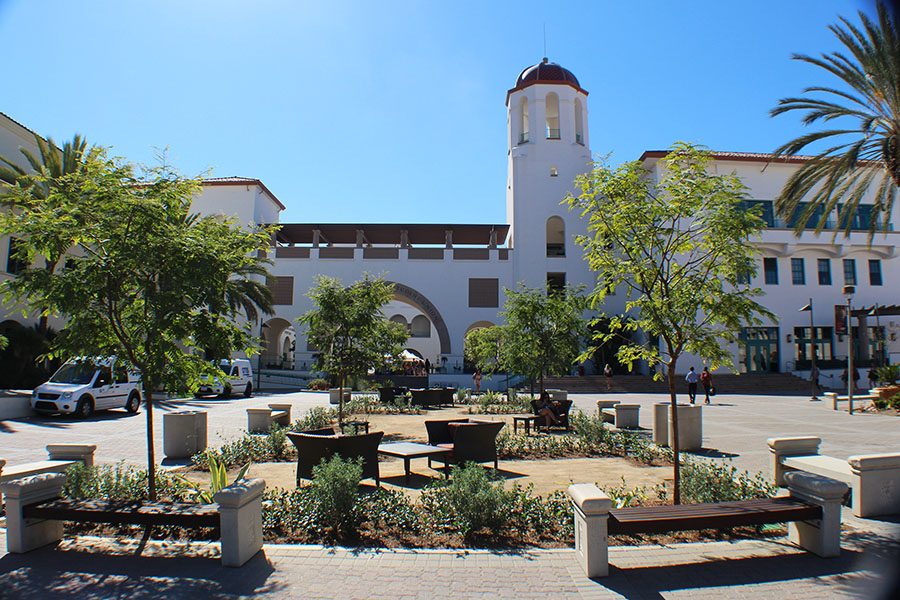Recently, San Diego State was ranked by the Princeton Review as one of the 361 “greenest colleges in the nation” due to the university’s sustainability policies, initiatives and educational programs.
The “Guide to 361 Green Colleges” ranks universities by data retrieved from the company’s 2015-16 survey which asked hundreds of four-year colleges about their commitments to the environment and sustainability.
SDSU made the list due to its several environmental organizations which spread sustainability and education.
GreenFest
The Enviro-Business society is an organization that brings environmental awareness and change to campus.
In collaboration with Associated Students, the club also plans GreenFest, a week-long series of events to promote sustainable living.
“We strive to make these events zero-waste, as well as promote zero-waste and composting,” marketing junior and GreenFest Chair Linda Dawood said.
GreenFest recently hosted an event called, “Grow with Greenfest.” During the event, students were able to write letters to San Diego politicians about why sustainability and green practices are important. In exchange for each letter, students were given a succulent to take home.
Dawood said the ultimate goal of the organization is to educate the students about sustainability and encourage them to implement these green practices into their own lives.
Sustainability Program
SDSU has an interdisciplinary sustainability program that encompasses courses and faculty from a variety of disciplines.
Director and Advisor of the Sustainability program Matthew Lauer said the major allows a variety of voices and perspectives to be heard, which creates greater progress in the sustainability movement.
“The key is to be open and have a dialogue about it,” Lauer said. ““It creates an intellectual space and a learning space and a research space to think about these issues.”
Sustainability students are required to participate in an international experience and an internship which brings sustainable change in the country or community they are working in.
SDSU had its first graduating class of sustainability students in 2014.
Campus Sustainability
This school year, SDSU remodeled the Centennial Mall in front of the Conrad Prebys Aztec Student Union and called it the Centennial Landscape Project. This project added seating and drought-resistant plants to Centennial Mall.
Assistant Director of Campus Sustainability Tom Abrams said the remodeling had been discussed for a year.
He said the reasons behind this project was to provide some shaded seating for students and for water use reduction.
Abrams said SDSU also plans to install an energy information system.
“What that will do is manage all of our energy and sustainability data,” Abrams said. “It will allow us to see trends and see how we’re doing as a campus.”
This system will be open publicly to SDSU students and faculty to see what buildings are the most sustainable.
The energy information system will reveal recycling rates on a building-to-building basis. This will allow SDSU to figure out which buildings are being most sustainable with their waste and how to improve buildings that are not doing as well.
SDSU also has a variety of LEED certified buildings.
LEED is a green building rating system. When giving out these certifications, LEED looks at energy use, water use, materials used and indoor environmental quality. The LEED rating system goes from silver to gold to platinum.
The Engineering and Interdisciplinary Sciences building, set for completion in 2018, aims to obtain an LEED Gold certification.
Currently, the Conrad Prebys Aztec Student Union is LEED platinum certified, Storm-Nasatir Hall is LEED Gold, and Zura residence hall is LEED Silver.







